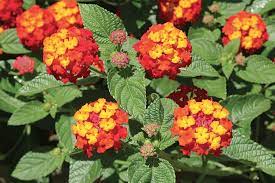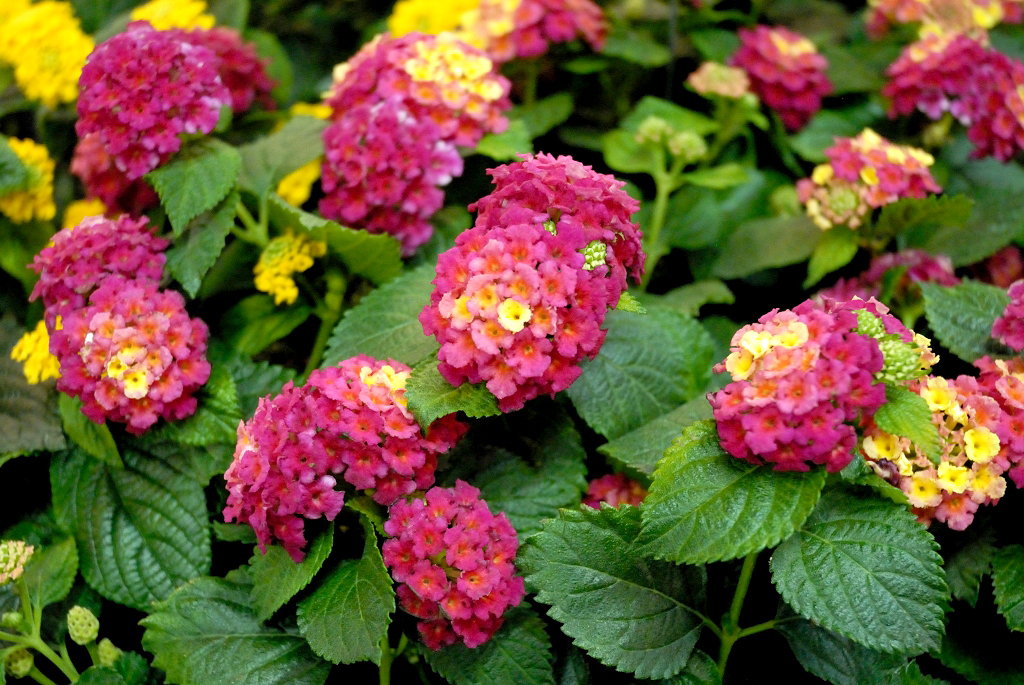
Lantana is a verbena genus with over 150 species of bright and colorful perennial blooming plants. The tiny, circular clusters of blooms on this plant come in a variety of hues, including red, orange, yellow, white, pink, and purple.
Lantana is a tropical invasive plant that thrives in locations where there are no cold seasons, such as Florida and Hawaii. It has a smell that is reminiscent of fermented citrus or gasoline. It likes the sun and thrives in warm, tropical settings. The plant can also withstand a lot of salt.
Lantanas are commonly grown in hanging pots and will die in the winter if you reside in a more moderate environment. If you live in a temperate climate and wish to grow your lantana as a perennial, you may bring it inside for the winter.
In indoor settings, this plant will not flourish or blossom, but it will go into hibernation. It’s better to give the plant as little light and water as possible during its dormancy.
Lantana is a South and Central American plant. Lantana is a perennial plant that thrives in warm climates all year. The lantana will become dormant, yet the blossoms will return year after year.

Lantana Care
Lantanas are a low-maintenance plant. They can withstand both partial shade and full sun, as well as arid circumstances. Continue reading for more information on lantanas.
Light
Lantana thrives in direct sunlight. It can handle moderate shade, but it prefers 6-8 hours of direct sunlight. The plant will not blossom as much if it is cultivated in a shadier location.
Water
When watered on a regular basis, lantana flourishes. If you’ve just planted lantana, make sure to water it periodically and don’t allow the soil dry up entirely. Established lantanas can withstand less water, requiring only a few inches of water each week.
The bloom rate of your lantana is affected by how often you water it. If your plant isn’t blossoming as much as it used to, consider giving it additional water.
Temperature
Lantana thrives in tropical and subtropical climates where the temperature never drops below 55°F. Lantana can withstand a light frost, but it will die if the temperature drops below freezing on a regular basis.
Soil
Lantana thrives in practically any well-draining soil, even if it contains more sand than usual. The plant also loves somewhat acidic soil, with a pH of 5.5-6.5 being ideal.
Fertilizer
Lantana is a low-maintenance plant that doesn’t require fertilizer to blossom well. Applying too much fertilizer to a plant might hinder it from generating a large number of blossoms.
You may fertilize your lantana with a modest quantity in the early spring or a 20-20-20 fertilizer once a month.
Toxicity
Almost all cattle, pets, and humans are poisoned by lantana. Triterpenoids or liver poisons are found in all sections of the plant.
Animals can be badly harmed or killed if they eat the berries, blossoms, or leaves. Adult people may experience stomach distress after consuming the herb. It’s best to keep this plant up high and out of reach of dogs and youngsters.

Propagation
Cuttings or seeds are the two ways to reproduce lantana.
Lantana cuttings are easy to propagate and generate offspring plants that are similar to the parent plant. Because most lantanas are hybrids, starting from seed will almost certainly result in a plant that looks nothing like the parent.
It’s quite easy to take a lantana cutting. All you have to do now is:
- Remove the leaves from the bottom half of the stem with a 4-inch portion of the stem.
- You may either soak the cutting in water to help it grow roots or put it in a tiny pot with moist soil.
- If you like, you may use a rooting hormone, but it’s not necessary.
- Keep the soil wet, and after the cutting has outgrown the pot, transfer it into the ground or into a larger one.
You should start seeds at least six weeks before you want to transplant them outside if you’re going to grow them from seed.
To start lantana, you can use any beginning soil mix. To soften the stiff seed coat, soak your seeds for up to 24 hours. Then, in separate pots, sow the seeds and cover them with about 1/8 inch of dirt.
Once the lantana has grown large enough and the weather has warmed enough, transfer it into larger pots or the ground.

Deadheading and Pruning
Deadheading lantana can help the plant produce more flowers, but if you want fewer blooms, it’s not essential. Pruning is likewise excessive, but if you must, you should only reduce your lantana to a third of its original size.

